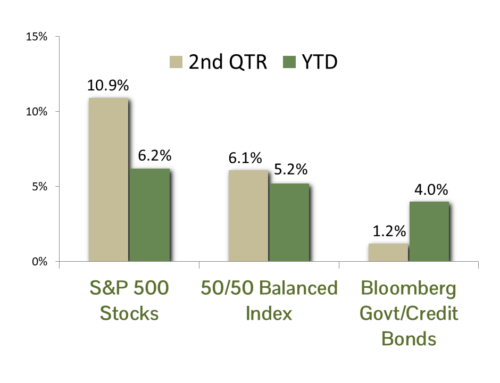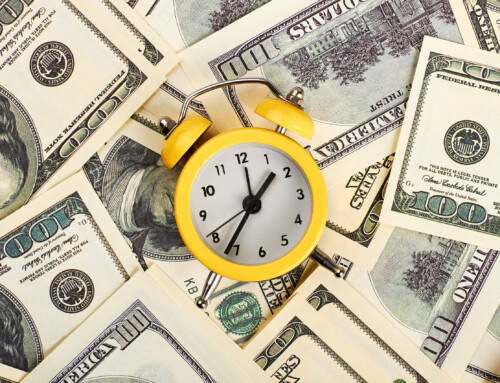CCM’s history stretches back well over thirty years, and the two darkest periods for the stock market during our tenure were the Dot-Com Bubble of 2000 and the Housing Bubble of 2008. A large number of our clients have been with us through these dark days as well, and we have received numerous questions from our clients anxious over today’s market euphoria and how it might presage another instance of a market bubble that eventually bursts. We believe in the end our findings will provide solace to those concerns.
The Dot-Com Bubble of 2000
History: The Dot-Com Bubble, also known as the Tech Bubble, began after the tech-heavy NASDAQ Index peaked on March 10, 2000. At that point the Index had risen over 400% since 1995 and sported a price/earnings ratio of 200x – inflated to extremes by both the leading technology names of the day (Cisco, Intel, Microsoft, etc.), as well as such speculative names as Pets.com, Webvan and eToys (all eventual casualties of the bubble).
2000 marked the peak for tech stock insanity, as well as the fall. During the 2000 Super Bowl, 20% of all adds were bought by near-bankrupt dot-coms. What ices the cake was in January 2000 when America Online merged with Time Warner – perhaps the most disastrous merger in corporate history.
As the tech bubble inflated, the ludicrous valuations assigned to the dot-coms also infected the broader market. Extremely popular during the time was the “Nifty Fifty” trade. This refers to investors gorging on the S&P 500’s largest fifty names, eventually pushing them to a peak valuation of a 54x P/E multiple. This included a gaudy 160x for tech stalwart Cisco (though the multiple would ultimately be much lower after its subsequent 86% decline after the bubble burst). Mundane issues in the consumer sector even joined in the action, with Coca Cola trading at 88 times earnings and Disney at 76x.
On March 15, 2000 the proposed merger between Yahoo and eBay failed and investors’ nerves began to fray. In mid-April the NASDAQ Index declined 25% in one week, setting off a flurry of selling that eventually shaved 78% from the index’s value and destroyed all of the gains from the bubble years. The Index would not match its 2000 highs again until August 2013. For the S&P 500 the losses were more muted, but still resulted in a precipitous decline of 38% from 2000-2002.
Similarities to Today: The closest resemblance of investing bubbles we see in today’s market is with the “meme” stocks such as GameStop, Robinhood, or AMC Theatres. However, the combined market capitalization of the entire group barely registers versus the weight of the broader market indices. Valuations for specific cultish issues such as Tesla at 385x or Twitter at 139x also seem bubbly, but again, the group of such issues does not compare in magnitude to the situation in 2000 for the dot-coms, the Nifty Fifty and other overvalued sectors within the S&P 500 Index at the time.
Another similarity between the two periods is declining interest rates and taxes, increasing the supply of investment capital. Also of note was an accommodative Fed, in this case stoking speculative shares through Alan Greenspan’s jawboning (though he eventually quickened the demise of the dot-coms by raising interest rates in 2000). Although it was before today’s always-on media and blogosphere spectacle, CNBC worked overtime to hype speculative investing. High profile tech analysts such as Henry Blodget and Mary Meeker rubber-stamped never-ending buy recommendations as well.
How This Time is Different: The root cause of the 2000 bubble was out-of-control speculation which eventually led to extremely high valuations. One investing truism that holds true is that performance ultimately follows valuation, and this was keenly on display when the bubble burst.
Today’s stock valuations are admittedly rich, with the forward P/E for the S&P 500 currently around 21x. However, at the same time yields on the competing investment (bonds) are miniscule, with the 10-year Treasury yielding only 1.3%. In 2000, however, the S&P 500 traded with a lofty P/E of 29x while the Treasury yielded over 6%.
Simply put, although today’s valuations are a bit rich for stocks, this is in the light of historically low bond yields and therefore there is little in the way of competition for stocks. At the other extreme, in 2000 stocks were trading at valuations nearly 40% over today’s levels while interest rates were 4 ½ times as high as today. We believe it is safe to say today’s market has very little to offer in comparison to the 2000 Tech Bubble.
The Housing Bubble of 2008
History: The timeline of the 2008 Housing Bubble, also known as the Great Financial Crisis, has roots back to 1977 with the Community Reinvestment Act. The Act had admirable goals, encouraging the Fed to eliminate “red-lining” and facilitate lender’s meeting the credit needs of the communities they did business in, including low- to moderate-income neighborhoods. However, after the Act was further expanded in the 1990’s the end result was greatly reduced lending standards by banks.
As a result of a growing desire from American consumers for better housing, loose lending standards and ample lending liquidity due to the securitization of mortgages, housing prices peaked in 2006. As you might expect, a large subset of borrowers with shoddy credit and no skin in the game via down payments was a recipe for disaster, particularly when the value of their properties quickly reversed their uptrend. The house that once served as an ATM was suddenly an albatross.
Defaults inevitably began to mount, and the contagion in the housing market poisoned the credit markets. Mortgage-backed securities (MBS), which had been passed on to Wall Street investors with glimmering AAA ratings by the agencies, suddenly started to act like junk bonds – particularly for the popular subprime tranche. Banks who held MBS suddenly were faced with capital shortages, as the value of their assets fell while their liabilities remained the same.
This translated into a full-blown liquidity crisis, with the first big victim being Bear Stearns in March 2008. This was nothing compared to the fall of Lehman Brothers in September 2008. Lehman was a major player in the commercial paper market, and its demised created massive funding problems affecting such elite companies of the time as General Electric.
The effects of the Housing Bubble on the broader market were seismic, and the S&P 500 Index declined 37% in 2008. From a policy standpoint, after the days of “too big to fail”, the financial sector was subsequently reined in to a “too big to operate on their own” regime that resembled management by government proxy. Capital ratios were hemmed in, the payment of dividends to shareholders was throttled and even corporate executive pay received oversight.
Similarities to Today: Home prices are currently on a tear, with the Case-Shiller index up 15% in 2021 on a year-over-year basis. This lags the double-digit stretch from 2002-2006, however, which served as the true roots for the housing bubble:

How This Time is Different: The exposure of banks to housing loans now stands at only 10% of total assets (half of their crisis era rate). Systemically important banks have been forced to hold considerably more collateral against their assets. Meanwhile, there has never been faster growth in household net worth than the past four quarters ended March 31, 2021. Even though house prices are high, interest rates are very low and income growth has been steady, making debt service very achievable. On the supply side, the virus has hamstrung new construction, and housing supply is greatly restrained. This makes the old flipping practice so prevalent during the Crisis quite difficult. Bottom line, although home prices are on the upswing in the U.S. there is almost no evidence we are again in anything resembling a bubble in housing.
Final Thoughts: With a P/E of 21x, stocks are trading at historically rich levels. There truly is no alternative investment, however, as the competing asset class (bonds) offers nothing more than return-free risk. There is always the risk of another exogenous shock to the stock market (such as COVID in early 2020), but as far as bubbles are concerned, we can only name a few stocks that currently fit the bill. Perhaps the bubbles in cryptocurrencies such as Bitcoin or Ethereum could inflict some collateral damage, but none of these are big enough to inflict systemic damage to the economy or markets either. The biggest overt risk to stocks is always the economy, but at present the economy stands on very firm footing. We remain optimistic on the prospect for the stock market over the near term.
CCM Investment Advisers, LLC is a Registered Investment Adviser registered with the U.S. Securities and Exchange Commission (CRD# 105743). The opinions and information contained in this report are for informational purposes only and are not meant to be predictors of future results. Such opinions and information do not constitute an offer or solicitation to provide investment advisory services. Such an offer can only be made in states where CCM Investment Advisers is registered. CCM Investment Advisers does not assume liability for any loss which may result from the reliance by any person upon such information or opinions.
Any type of investing involves risk of loss and there are no guarantees that the strategies described may be successful. Any performance data reported represents historical data and future returns may differ significantly. Past performance does not guarantee future results.
Security, index and economic information are obtained from resources which CCM believes to be accurate but no warrant is made to the accuracy or completeness of the information. Various indices described and discussed herein are unmanaged; investments cannot be made directly into an index.
The S&P 500 Index ® is a readily available, capitalization-weighted index of 500 stocks. The index is designed to measure performance of the broad domestic economy through changes in the aggregate market value of 500 stocks representing all major industries.
The NASDAQ Composite Index is a readily available, capitalization-weighted index of over 2,500 domestic and international companies listed on the NASDAQ Stock Market.
The Barclay’s Government/Credit Index is the non-securitized component of the U.S. Aggregate Index. The index includes US Treasuries, government-related issues and corporate bonds
The ICE BofAML 0-3 Month US Treasury Bill Index is a subset of ICE BofAML US Treasury Bill Index including all securities with a remaining term to final maturity less than 3 months.
All blended benchmarks are static blends.
Technical Terms (definitions sourced from Investopedia)
The term federal funds rate refers to the target interest rate set by the Federal Open Market Committee (FOMC). This target is the rate at which commercial banks borrow and lend their excess reserves to each other overnight.
The Consumer Price Index (CPI) is a measure of the monthly change in prices paid by consumers. The CPI consists of a bundle of commonly purchased goods and services. The Bureau of Labor Statistics (BLS) calculates the CPI as a weighted average of prices for a basket of goods and services representative of aggregate U.S. consumer spending.
The Producer Price Index (PPI) measures the average change over time in the prices domestic producers receive for their output. It is a measure of inflation at the wholesale level that is compiled from thousands of indexes measuring producer prices by industry and product category. The index is published monthly by the U.S. Bureau of Labor Statistics (BLS)



